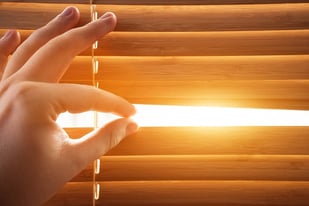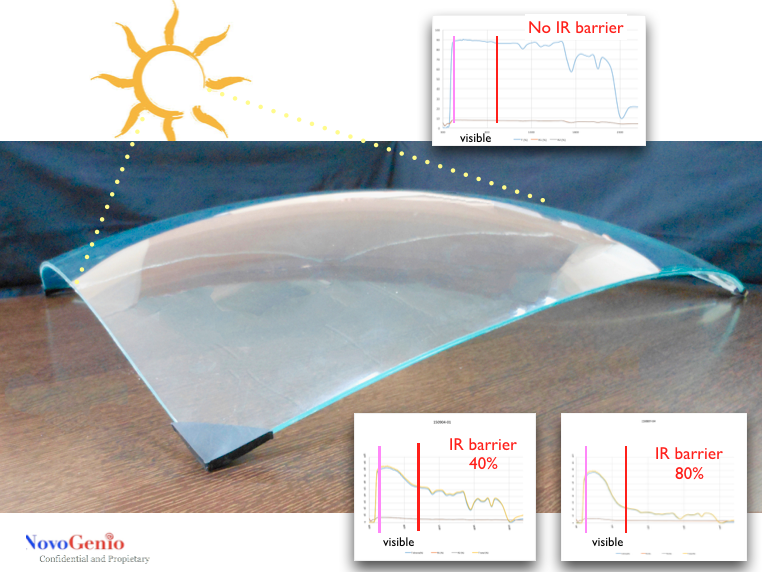The heat that comes from the Sun radiation

Talking about the sense of comfort inside vehicles and houses, it is well known that temperatures between 20º-25ºC make us feel more
or less comfortable. Above 25ºC our feeling of discomfort raises up.
Some of the heat that we feel inside the vehicles and houses comes through the windows and this heat might raise up by an accumulative effect. This happens normally when the windows are closed and there is no way to compensate the heat. If you are interested to know some details about the sunlight and how the sunlight radiation contributes to warm up ourselves we invite you to get our sunlight radiation presentation.
In the coldest areas of the world, when the daytime temperature is around 10-15ºC, the sun heat that comes through the windows helps us to reach a comfort temperature. In the hot areas of the world, above 25ºC outside temperature, we are forced to act differently in order to come back to our comfort range. We need to decrease the temperature. One way is to open the windows allowing the refreshed air gets inside, another way is to cool down the inside by using air conditioning, and another possibility is to "darken the windows" to block the entrance of the sunlight.
But if we need to see through the windows and there is no air conditioning or we want to save energy, then there is a technical solution for that. That requires the blockage of the IR radiation, the range or sunlight radiation that brings us the 40% of the heat and it is not useful for our vision. Technically there are different ways that can be used to block the mentioned IR radiation.
Blocking the IR range
Today the possible available options are the following:
- Using Low Emissive Glasses. These are specially surface treated glasses that absorb and/or reflect the IR radiation.
- Using surface coated rigid films. These absorb and/or reflect the sunlight IR radiation. These are normally PET based films that have been coated or surface treated.
- Using specially formulated flexible films. These films absorb and/or reflect also the sunlight IR radiation. All are PVB based films, like the S-lec® Solar Control Film from Sekisui or the Saflex® S Series as PVB solutions from Eastman.
Each one of them has its own advantages and disadvantages:
- The use of Low Emissive Glass has as a major drawback that the IR coating might delaminate easily from the glass by cracking, especially when the glasses are curved.
- The use of a coated rigid film drawback is that this film has to be laminated between two interlayers of different dilatation coefficient and mechanical properties, that drive to the formation of internal wrinkles and optical defects.
- The use of a flexible film that blocks the IR radiation solves the problems of the rigid materials, and it is a good solution. But unfortunately, the PVB is not the best polymer substrate to be used as an IR film support, because it is highly hygroscopic and also has no adhesion to other polymers materials like PMMA, PC and PET, which are normally used as functional elements for e-Glass, Impact Resistant Glass and Bullet Resistant Glass structures.
Our IR radiation blocker TPU film, the NovoGenio solution:
As an alternative to usage of the PVB flexible films with IR barrier properties, we propose the use of our Film NovoGlass® SF 1992. With using this Film, you will be able to construct all type of glass structures with IR barrier properties (standard Architectural Glass, e-Glass, Impact Glass, and Bullet Resistant Glass) with the following advantages:
- Different IR barrier levels
- Good adhesion to glass
- Good adhesion to PC, PMMA and PET materials
- Excelent adaptability and bending properties
- Comfort and Energy savings. To know how much energy you might save we suggest you can visit our web page: How much energy can be save by blocking the IR range of the sun radiation.

If you are interested to know more about the special properties and the capabilities that our TPU Grade can offer, please do not hesitate to contact us.
CATEGORIES:
Photovoltaic, Architectural Glass, Glass and Polymers Laminates, Security Glass, Light Control GlassFebruary 12, 2017